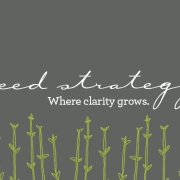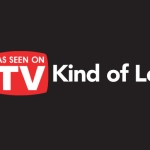A Conscious Question: Can Non-Conscious Measurement Unlock Ultimate Consumer Truths?
I am a consumer in every sense of the word. (I promise, I screen myself out as a research respondent, but the fact is, I am a consumer.) And I confess; like most consumers, I don’t always do what I say I do.
I may say I purchase name brand soymilk on three out of four occasions, when in fact, the actual ratio is probably closer to one out of four times.
Also like most consumers, sometimes I think about my purchases (a new lens for my camera). Other times, I don’t (downloading a song I just heard on the radio with one tap of the finger). Sometimes, my purchases involve a lot of emotion (toys for my kids on their birthdays). Other times, I. Feel. Nothing. “One pound of thin-sliced, oven-roasted turkey, please.”
I’m just one complicated, albeit probably not very interesting, consumer. Marketers and consumer researchers must decode millions of equally complex consumers across brands and categories… what they say, do, think, feel. And because consumer behavior can be conscious and mindful at times and automatic and detached at others, choosing an approach to uncover breakthrough insights can be extremely difficult.
As consumer decoders, we must understand motivations, emotions and behaviors. And we are recognizing more and more that traditional approaches using direct questions may be limited by the extent to which consumers can articulate reasoned responses.
Exciting new methodologies are coming along that aim to break this tension, but we must be sure to apply them (and interpret them) with caution. Just like with the emergence of big data or social media, we have to be careful not to chase shiny new methods without warrant. “Traditional” does not necessarily mean insufficient. Now, we simply have more alternatives to consider—approaches that may complement existing methods.
Heavily influenced by Behavioral Economics, a set of non-conscious measurement (NCM) tools is emerging as an example of the kind of technique with potential to augment current “traditional” ask/answer approaches. These NCM tools may help uncover what consumers cannot or will not say… those aspects of decision-making that are not deliberate, controlled or based on reasoned assessment. This includes underlying memory-based associations and biases (like my eyes tearing up any time I see dads, sons and family dogs all growing up in a 30-second ad, in the comfort of an all-wheel-drive Subaru, for example). At the end of the day, some responses are just automatic. Some behavioral tendencies just can’t be articulated.
Curate, Experiment, Triangulate. Repeat.
Our latest decoding challenge is to curate, experiment and triangulate among the various new NCM tools and data sources at our disposal. Each approach taps into a different source of information; used together wisely (and in conjunction with traditional techniques), we can create learning plans that offer different, potentially more holistic perspectives of consumer behavior.
As we think about learning plans at Burke & Seed, we are firmly “tool and data neutral.” We first set out to curate the right approaches for each project.
We believe some NCM tools hold promise when measuring stimuli-based reactions like product concepts, packaging, websites and TV spots. These approaches include…
- Voice coding
- Eye-tracking
- Facial coding
- Neuro (EEG and fMRI)
- Biometrics (GSR, heart rate, respiratory rate)
Meanwhile, we believe that other NCM approaches hold potential when we seek more memory-based associations like brand engagement. These include…
- Implicit association tests (measure the strength of non-conscious association between two ideas)
- Response latency (measure how long it takes to answer a question to infer strength of associations)
- Projective techniques (analyze responses to ambiguous stimuli or situations to reveal non-conscious attitudes or emotions)
- Observation-based approaches (watch and learn… without the need for words and questions)
Beyond considering which approaches apply to specific research objectives, we must also experiment. Many of these non-conscious approaches have worked well in academic settings. However, in applied marketing research settings, few have been exhaustively tested and clearly linked to in-market outcomes. Predictive accuracy, power, replicability and norms are not well-established.
Consider innovation, where upstream insight research is temporally distant from market launch. It is difficult to predict in-market success (trial, repeat, market share) using things like fMRI scans from respondents viewing new product concepts. Because of this, volumetric norms, survey-based responses and the aforementioned “traditional” ask/answer techniques continue to drive decisions for the time being.
We feel the best course, then, is to triangulate. Until the body of evidence for any of these non-conscious measures is irrefutable, we will continue to experiment and curate learning plans with our client partners that incorporate select non-conscious measures alongside “traditional” approaches.
Culture Caution
With a spectrum of new and existing approaches, we’re decoding consumers at an interesting (and exciting) time. The tools are, in fact, exciting, but the best way to use the outputs remains somewhat unclear. Gradually integrating learning from new tools to enhance “traditional” approaches seems to be the most pragmatic solution.
The fact is, if a new tool can’t be tied to return on investment, or if its results can’t be widely understood and used within the organization and its research culture, it’s best to be conservative and selective. Case by case, new approaches may have demonstrated benefit, scalability and incremental value. However, because of the ambiguity still associated with most NCM techniques, few corporate cultures are ready to abandon proven, “traditional” approaches.
Ultimately, no single NCM approach is the answer, just as no single “traditional” approach is ever the sole solution. Leveraging a multi-dimensional, customized learning plan is the key to bridging the gap between what people say and how they think or feel—and what they really do… no matter what approaches we choose.
Corey Beilstein is a Senior Vice President and the Director of Research and Development at Seed Strategy. He blends research technologies with his background in behavioral sciences and cognitive psychology to decode consumers and unlock breakthrough insights.
P.S. You can follow Seed Strategy on our LinkedIn, Twitter, Facebook and Instagram pages.










Trackbacks & Pingbacks
[…] A Conscious Question: Can Non-Conscious Measurement Unlock Ultimate Consumer Truths? […]
Comments are closed.